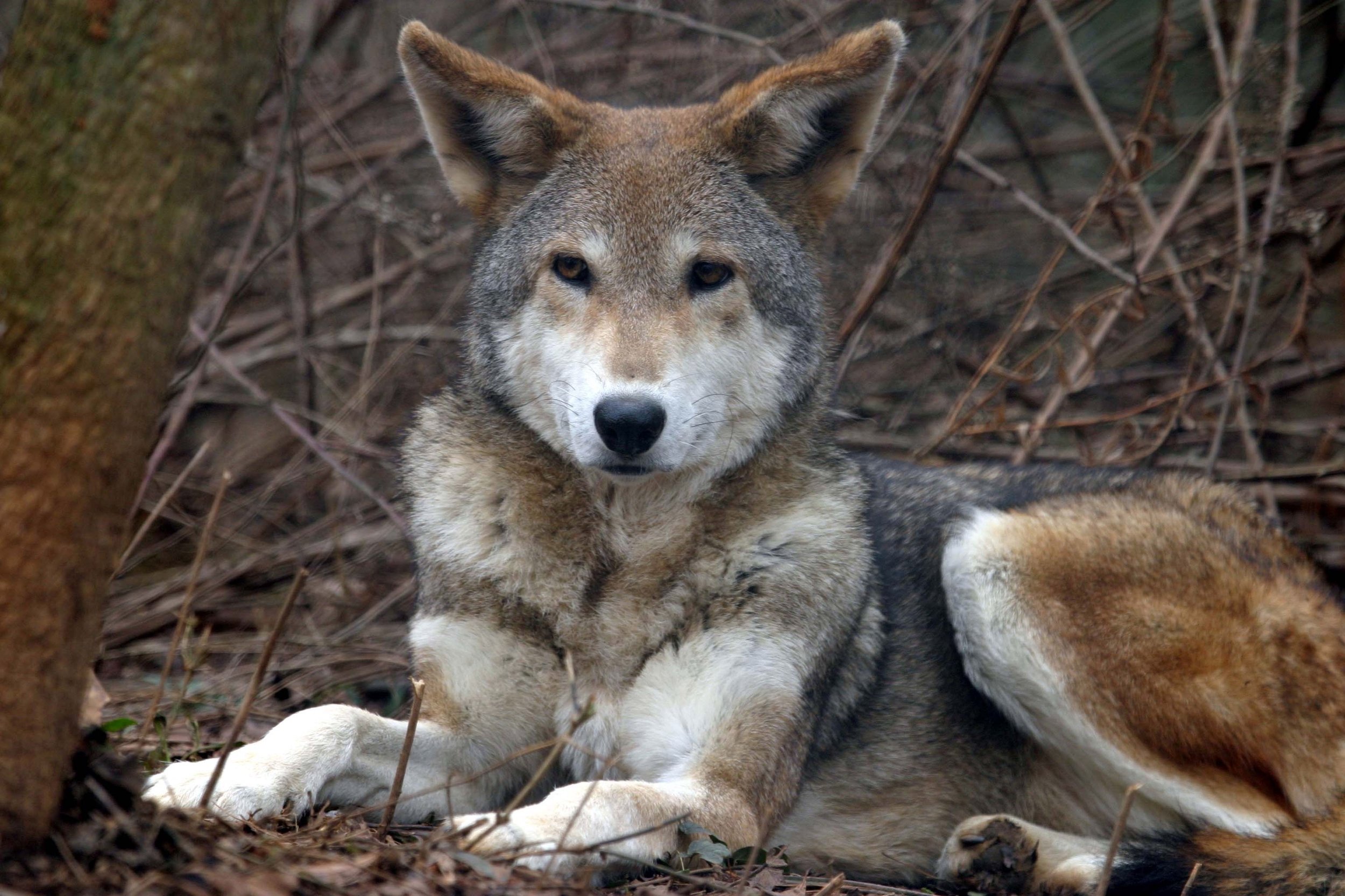Red Wolf Survival Plan Updates
The U.S. Fish and Wildlife Service Red Wolf team and Red Wolf management team meet quarterly to exchange information. Because the red wolf is critically endangered, with only eight confirmed living in the wild, these meetings are often both exciting and difficult. Our most recent meeting brought some sad and hopeful updates.
The wild population has only eight known red wolves, with an estimated total of 15-17.
Several months ago, four adult red wolves were placed in acclimation pens for release within the recovery area. This historic event was the first time adult red wolves from managed care have been released since 1998. Additionally, four pups were cross fostered into a wild den. Of the adults, three were killed by car strikes, and one was fatally shot. The pups have been seen on game cameras, although biologists are not certain how many are still alive.
More recently, nine adult red wolves from managed care were placed in acclimation pens and released within the recovery area. Garnet, red wolf 2141, who was born at Reflection Riding in 2016, is one of those adults. His sister, Ruby, red wolf 2142, remains at Reflection Riding as a breeding female and has produced two litters and is paired for breeding this season. Another released wolf is the offspring of a wolf born at Reflection Riding. Two others are offspring of wolves currently in our care. These releases mark the many times Reflection Riding has contributed directly to wild releases.
Romulus and Remus
Currently, biologists know of one pair of red wolves that are together, and we hope more breeding pairs will be made from the nine releases. Additionally, a male from managed care has been placed on the island propagation site of St. Vincent’s National Wildlife Refuge in the hope that he will pair up with one of the resident females. Recently, he has been seen with one. There have not been any red wolf litters born in the wild the last three breeding seasons. By bolstering the population with these releases, we are hopeful litters will be born this year. (Breeding season is January through February, with pups born in April and May.)
Additional Support for the Species
The Red Wolf Species Survival Plan coordinator and other red wolf team members recently met with the Department of the Interior and Department of Transportation to discuss red wolves and needed support. Both meetings had positive outcomes, with each government organization recognizing the value of red wolves and the need to protect them. Both support more signage in the recovery area alerting motorists to wildlife in the area and promoting slower speeds to prevent deaths by car strikes. Additionally, Wildlands Network has developed a red wolf roadkill map that covers the entire red wolf program timeline. This map supports the need for additional signage in the recovery area, in addition to more visitor and resident education. Ultimately, the goal is to implement a more permanent solution, using wildlife corridors that provide safe pathways over heavily traveled roads and have proven successful in other locations.
Wildlands Network has also been working on a detailed study elucidating the positive impact red wolves have on Bobwhite Quail. This game bird’s population is in steep decline with a high priority for conservation. Red wolves prey on the birds’ predators, such as raccoons, that raid the quail’s nests. The data gathered during this study has proven the symbiotic relationship between red wolves and Bobwhite Quail. This impactful study is another arrow in the quiver of red wolf conservation awesomeness.



